There has been an outpouring of support from political leaders, celebrities and the public for many of the workers at the frontline of the COVID-19 pandemic. Scenes of community-led applause and pot-banging for healthcare personnel, especially, have been heartfelt and heartwarming. In New York, firefighters lined up outside hospitals to show their appreciation.
The most obvious recipients of our gratitude are doctors and nurses. But there are many other staff who may be less visible but no less important to the running of hospitals and other medical facilities. These workers occupy positions such as care aides, clerks or cleaners. These jobs are typically lower-paid. And, at least before the pandemic, their jobs were considered to be of much lower prestige.
More broadly, the pandemic has highlighted the vital importance of many workers in so-called “low-status”, “low-skills” or “low prestige” jobs in our food supply chains, transport networks and elsewhere. These workers are disproportionately Black or Hispanic. Many are immigrants, sometimes undocumented. Their jobs lack many of the benefits and protections of “high prestige” positions. Very often the workers themselves feel ignored or disrespected.
Here we use data from the General Social Survey (GSS) to examine the perceived occupational prestige of many of these essential workers. Our findings echo those of our colleague, Molly Kinder, who is conducting extensive qualitative interviews with essential workers across a variety of industries. With Molly’s permission, we have also included quotes from some of her interviewees highlighted in her new piece, “Meet the COVID-19 frontline heroes: Unsung Health Heroes”.
The prestige: Hospitals as microcosms of the respect gap
The GSS collects data on the perceived “social standing” of 860 occupations, from which an occupational prestige ranking is calculated. The 44 different occupations found in hospitals offer a good example of the variation of perceived standing. Some hospital workers, such as doctors and nurse practitioners, are right at the top of the scale. Counselors and healthcare aides rank somewhere in the middle, while cleaners are right at the bottom:

“People are not looking at people like us on the lower end of the spectrum. We’re not even getting respect. That is the biggest thing: we are not even getting respect. Nobody is listening to their voices.” – Tony Powell, Unit Secretary, Hospital
When we clap, we may think of course of the nurses and doctors treating patients; but we ought to think too of the people scrubbing and disinfecting the walls and floors.
How to calculate occupational prestige: Not all jobs created equal
Judging the standing of different jobs is of course a difficult matter, given that views are likely to differ. Most rankings therefore use in-depth representative surveys. In the most recent update, the 2012 General Social Survey asked more than 1,000 people to rank the “social standing” of occupations on a scale from 1 to 9. The results were then converted into the 100-point scale shown above, with 100 being the highest, and 0 being the lowest. We used the GSS’s threshold approach, which evenly distributes the scores throughout the scale. (More details about the methodology can be found here).
These rankings suggest that engineers, nurse practitioners, scientists, and doctors have the most prestigious jobs, with scores above 95 out of 100, and telemarketers, food preparation workers, parking lot attendants, and door-to-door sales workers have some of the least prestigious jobs, with scores under ten.
“Our situation will be better if we can get appreciation. That sounds crazy, appreciation. A thank you. ‘I am glad you are here, thank you for coming to work.’ Hazard pay. Anything.” – Ditanya Rosebud, Cook and hostess, Nursing Home
Essential but not prestigious
One of the new terms to enter our vocabulary during the course of the pandemic is “essential worker”. But how many of these essential workers are in high-prestige occupations? To address this question, we follow the lead of our colleagues Adie Tomer and Joseph Kane and use the Department of Homeland Security list of essential industries.
Tomer and Kane relate the North American Industry Classification System (NAICS) to the DHS list to get specific industry codes. We converted these to the Census occupation codes used in the General Social Survey in order to estimate where essential workers rank in terms of occupational prestige[1]. The definitions and matching are far from perfect, but produce a close enough match for our purposes. To simplify the presentation of our results, we then converted the prestige scores into quintiles i.e. with the bottom 20% of occupations on the scale in the bottom quintile, and so on.
We find that the workers keeping the United States running can be found on every rung of the occupational prestige ladder, and are, in fact, surprisingly evenly distributed across the entire scale. If anything, middle-ranking occupations have a slighter higher proportion of essential workers (23%):

Revaluing workers after COVID
Differences in the perceived prestige or social standing of certain jobs is nothing new. At worst, attitudes towards certain jobs, or certain workers can take the form of disdain, or even disrespect.
“One minute you are important enough. The next minute, you aren’t that important to get the proper equipment, but you are important enough to clean for the next patient…It shouldn’t take such a trying time for us to get recognized, considering we are the heart of the hospital.” – Andrea, Housekeeper, Hospital
In August 2018, pictures of actor Geoffrey Owens “spotted” bagging groceries as a Trader Joe’s employee went viral. Owens is most famous for his role on the Cosby Show (playing a physician, as it happens), and the tone of initial social media commentary was of the “how-low-can-you-go” variety. Undaunted, Owens toured the TV studios, making the case for the value and importance of his new job – and gained many more admirers along the way.
The pandemic has exposed the divisions within the labor market in terms of pay, benefits and flexibility, which in turn reflect growing disparities of power. Of course, there will always be jobs that that require different kinds of training and skills, with different wage levels, and varying levels of authority. And our data long pre-date Covid-19. But as essential workers, both seen and unseen, continue to do their jobs in the midst of a pandemic, despite the risks, it is time to rethink our current perceptions about job status, and respect work for what it is – work.
[1] Note that we also had to convert the 2017 NAICS industry codes to the 2007 NAICS codes, which are available as a variable in the GSS. Our tables are available on request.
The Brookings Institution is committed to quality, independence, and impact.
We are supported by a diverse array of funders. In line with our values and policies, each Brookings publication represents the sole views of its author(s).
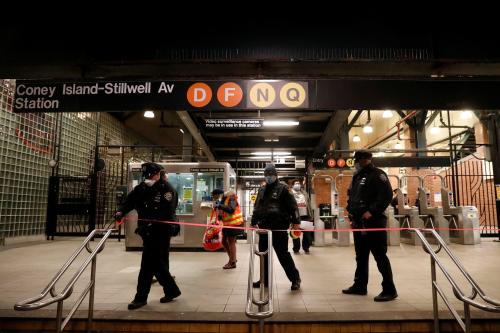
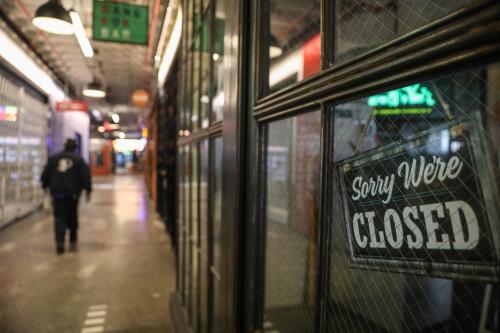
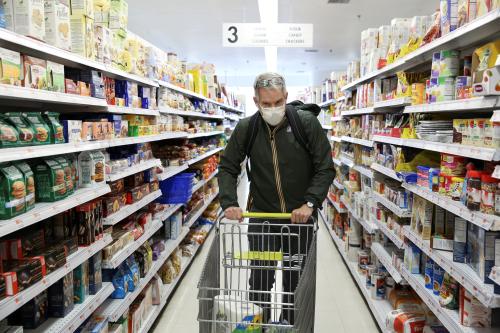



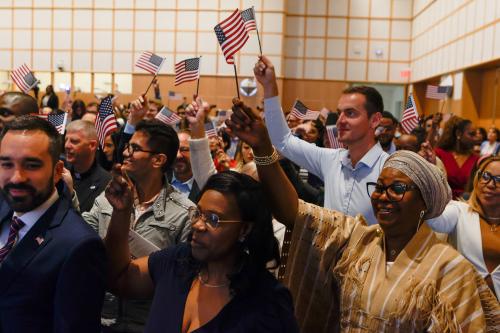
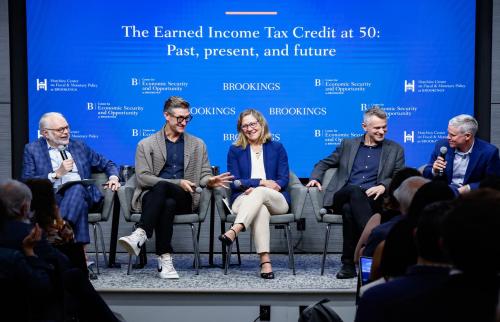
Commentary
Many essential workers are in “low-prestige” jobs. Time to change our attitudes – and policies?
May 28, 2020